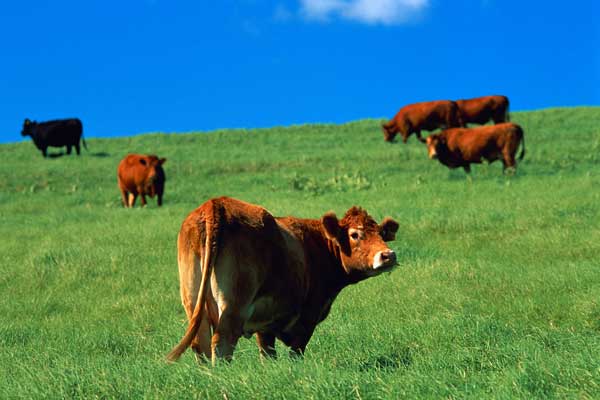September 13, 2012

Cattle producers in Oklahoma and other Southern Plains states need to be aware that drought conditions may cause vitamin A deficiencies in their animals.
Vitamin A is rarely a concern in range cattle nutritional programs because it is readily synthesized from carotene that is common in green growing plants. However, in drought situations where plants become dead or dormant, the carotene content becomes practically devoid and may lead to a deficiency of the precursor to vitamin A.
“Carotene is very low in mature, weathered forages, grains and many crop residues, and will be lost in stored hay crops over extended periods of time,” said Glenn Selk, Oklahoma State University Cooperative Extension emeritus livestock specialist. “If hay that was stored throughout all of last fall and winter is to be fed in the upcoming winter, the vitamin A content will be considerably less than when that forage was originally harvested.”
In addition, some scientists have suggested that high nitrate forages common in drought years can exaggerate vitamin A deficiencies.
“Deficiencies of vitamin A usually show up first as weak, blind or stillborn calves,” Selk said. “Other signs are scours, respiratory problems, poor gains and poor reproduction.”
Fortunately, the liver of cattle is capable of storing vitamin A for long periods and frequent supplementation is not necessary. A singular injection of one million International Units (IU) of vitamin A provides sufficient vitamin for two months to four months in growing and breeding cattle.
“It is important to remember that vitamin A and A, D and E injections have been found – on very rare occasions – to cause a severe reaction to the vaccine,” Selk said. “Producers should consult their veterinarian about the use of these products.”
Because the daily requirements of beef cows range from 30,000 to 50,000 IU, depending on size, stage of production and level of milk production, supplements can be fortified with vitamin A to supply the minimum daily requirement.
“Depending on the quantity of range supplement being provided, vitamin A can be added to supplements at the rate of 5,000 to 10,000 IU per pound of feed,” Selk said.
Anyone interested in obtaining additional information about vitamin and mineral needs for grazing cattle should consult the Oklahoma Cooperative Extension Service circular E-861, "Vitamin and Mineral Nutrition of Grazing Cattle," available through all OSU Cooperative Extension county offices or at http://osufacts.okstate.edu via the Internet.
Cattle and calves are the number one agricultural commodity produced in Oklahoma, accounting for 46 percent of total agricultural cash receipts and adding approximately $2 billion to the state economy, according to National Agricultural Statistics Service data. NASS data indicate Oklahoma is the nation’s fifth-largest producer of cattle and calves, with the third-largest number of cattle operations in a state.
You May Also Like




